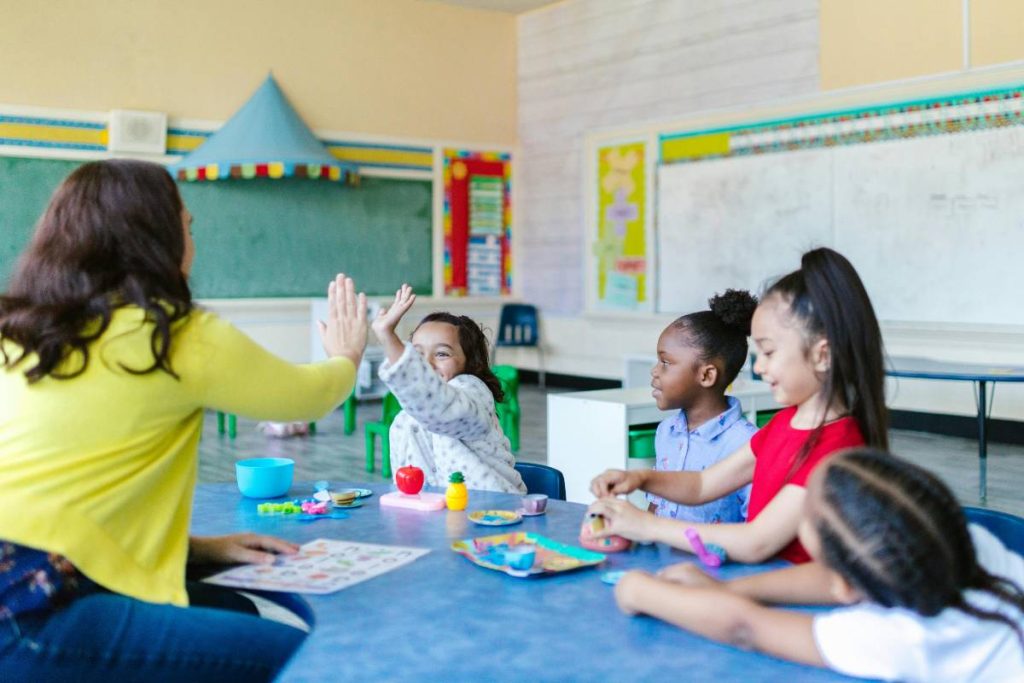Classroom transitions can feel disruptive and challenging for some students. Changing from one subject to another, starting a new art project, or simply walking to the auditorium for a presentation can elevate stress levels. And, in some instances, difficult transitions can result in meltdowns that make everyone else uncomfortable, too.
Fortunately, it doesn’t have to be that way. With some creativity and thoughtfulness, teachers can make these transitions easier for all of their students. Keep reading to learn seven teacher-tested ways to ease classroom transitions, create predictability, and enhance the school day experience.
1. Offer a Preview of What’s Next
Most kids thrive with routines, and school is no exception. Offering a predictable schedule can be extremely helpful, as can alerting students to transitions from one part of the schedule to the next. Students will feel more secure knowing what’s coming next.
Teachers can post a daily schedule that shows the times when they’ll be transitioning from math to history, for instance. They can also give students a verbal preview by indicating that a change is coming in five or ten minutes.
These simple cues can help students understand that they’ll need to mentally prepare for a new activity or lesson. This is particularly helpful for students prone to feeling anxious about changes or unknown situations.
2. Try a Countdown Clock
Some students may struggle to visualize when a transition is coming during the school day. Countdown clocks are an easy way to help them see the structure of the day. If students are working independently on math worksheets, for instance, having a timer or countdown clock can alert them to the fact that they have ten or fifteen minutes left. Similarly, countdown clocks can be great for group work activities, helping students budget their time more effectively.
3. Designate a Calm Space
Transitions can be particularly difficult for students easily affected by sensory overloads. That’s why it’s so important to designate a calm or sensory space for students. They can go to this space alone and take the time they need before rejoining the class.
Add noise-reducing headphones, guides, or fidget toys to the space. For an autistic child is having a tantrum, these devices and spaces can help reduce the impact of overstimulation. Teachers can practice de-escalation techniques, as well, to help prevent meltdowns and intervene effectively when they do happen.
4. Add Movement Breaks
Take time for stretching and moving throughout the day. Movement breaks are an excellent way to help kids stay mentally focused and burn some energy. Simply standing up, reaching, bending, or doing other simple poses can feel rejuvenating.
Other options include brain breaks, which entail having students complete a few quick movements. Students could march in place or jump to let out excess energy. They’ll enjoy some laughter in the process, lightening the mood as they approach the next task.
5. Try Quiet Signals
Sometimes transitions can cause the noise level to rise in the classroom. Using quiet signals in these moments can help bring down the noise and help students refocus. Raising a hand, sounding a chime, or waving can get students’ attention.
Teachers should be consistent with their quiet signals so students learn what to look for at the front of the classroom. Building a routine can help reduce stress levels during moments of change.
6. Provide Choices for Students
Students respond well to situations where they have options. Teachers can play to this preference by offering choices when it comes to tasks or activities. Give a student a choice between wiping desks or sorting glue sticks, for instance.
Or ask students to clean up their desks before heading to the common space for a story. Providing a clear sequence of steps and an appealing activity at the end can help students feel more involved.
7. Model Effective Co-Regulation
Teachers have to manage a lot of student emotions in the classroom. But they also have to manage their emotions. And teachers need to be the ones to model effective co-regulation when situations get tense. Teachers should honor how a student is feeling if they’re angry or frustrated during a transition. And they encourage actions like taking a deep breath or stretching to cope with the feeling.
Teachers can help families by jotting down how students handle difficult situations. If taking a breath or journaling helped a student adjust to a transition, for instance, that can be helpful information for parents.
Build Smoother Transitions
Teachers can help students ease into transitions through a few simple actions. Countdown clocks, verbal announcements, and quiet signals are among the steps that can make transitions more obvious and routine. In general, students respond to consistent schedules.
When teachers commit to maintaining routines and providing outlets, like calm spaces or movement breaks, they can cultivate a classroom environment where students feel supported.





